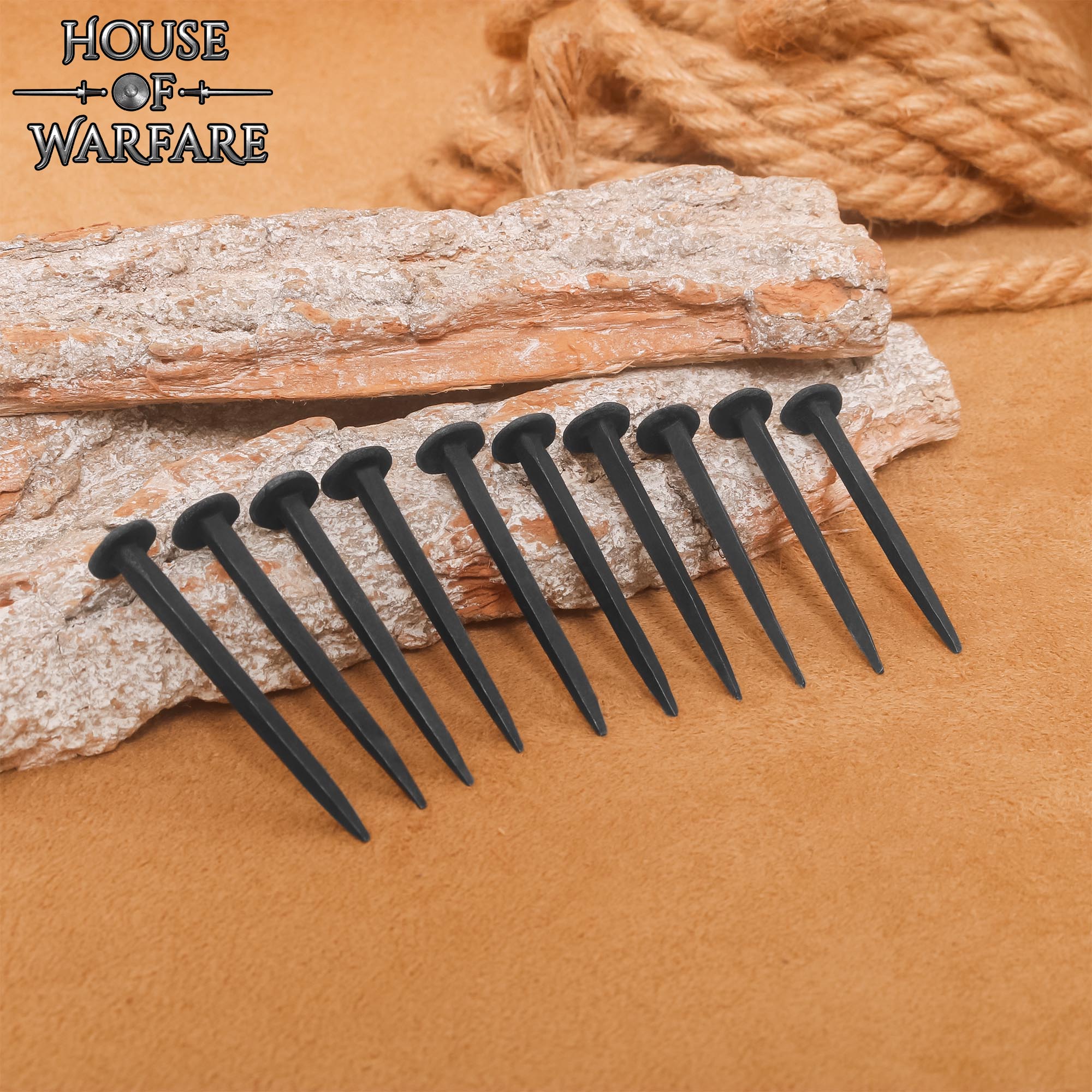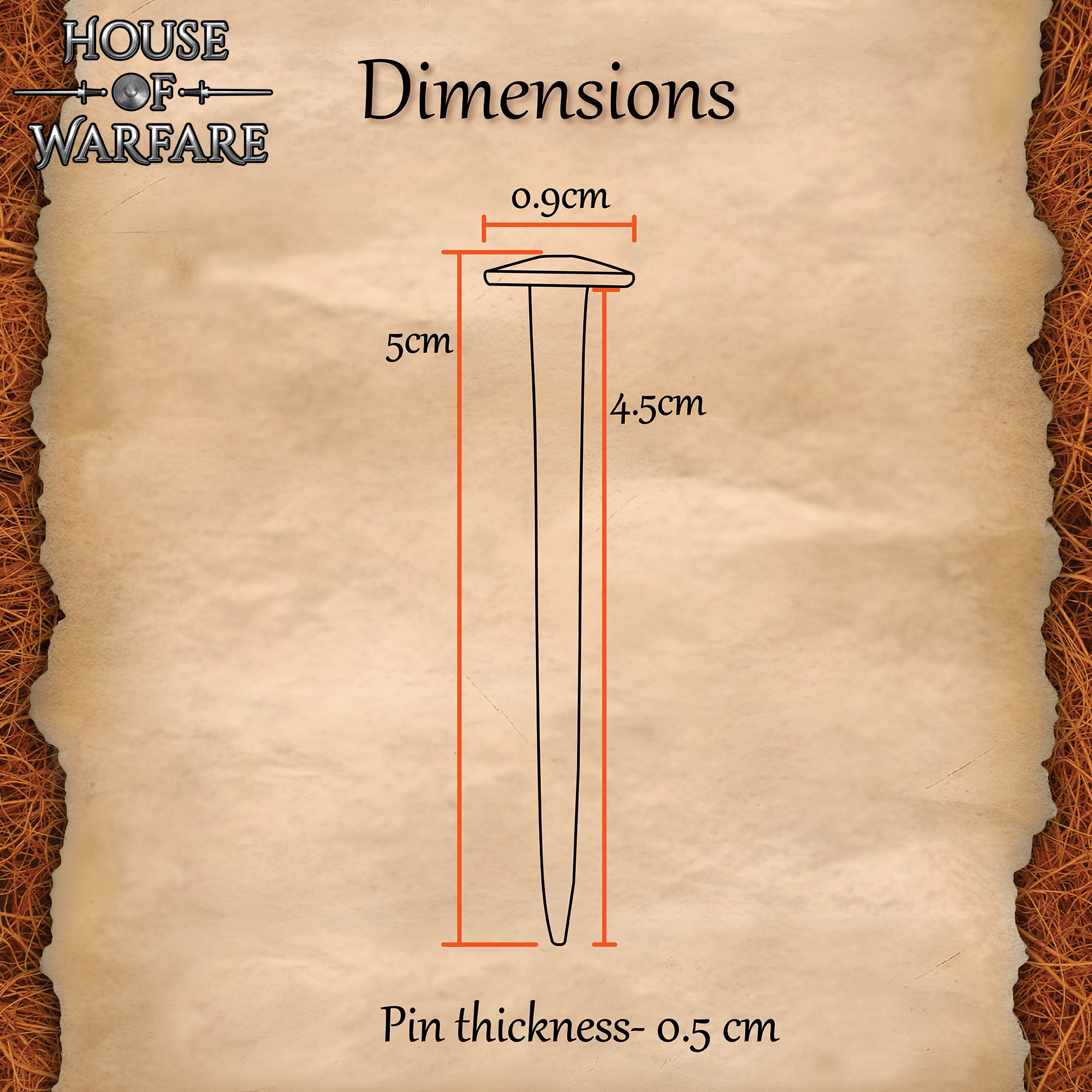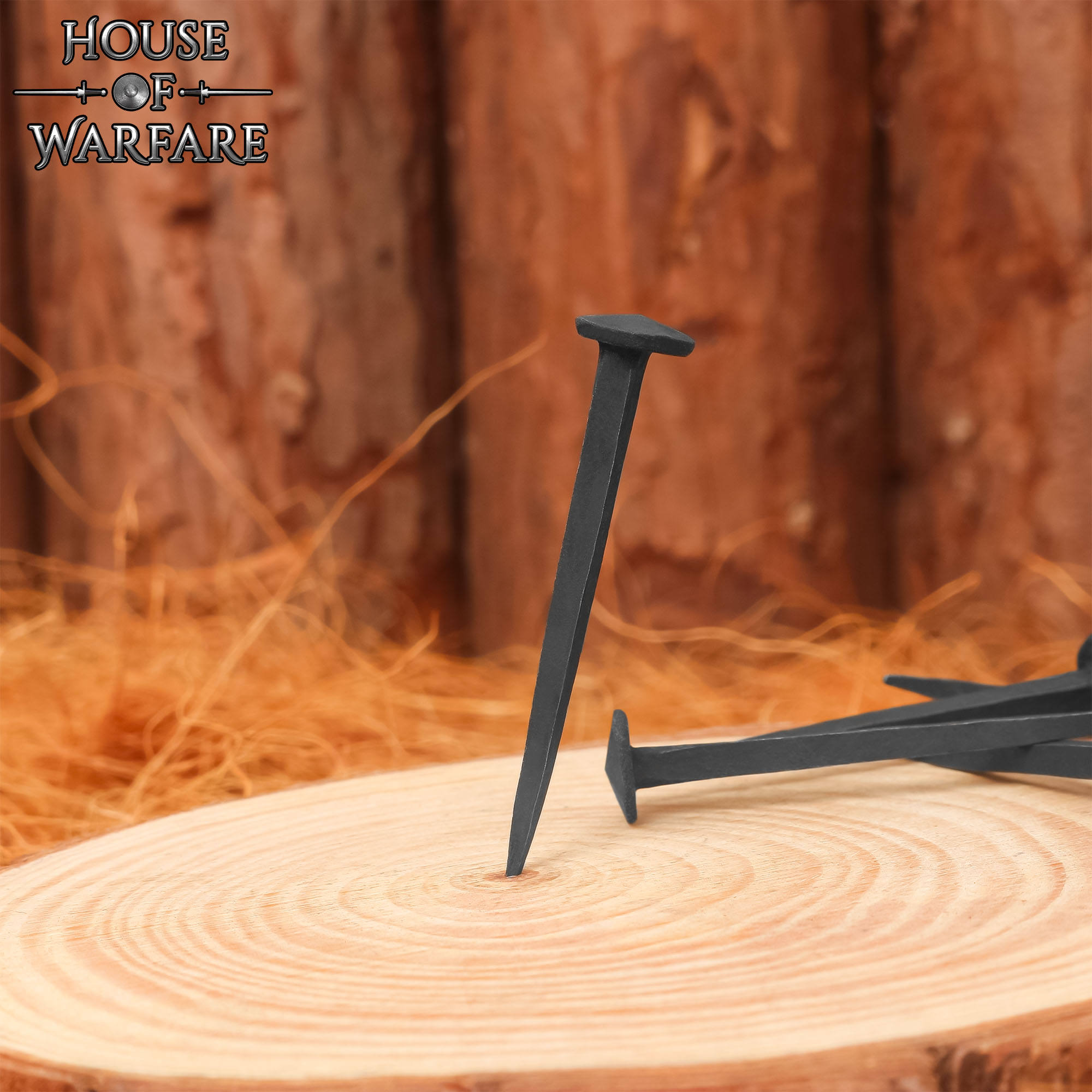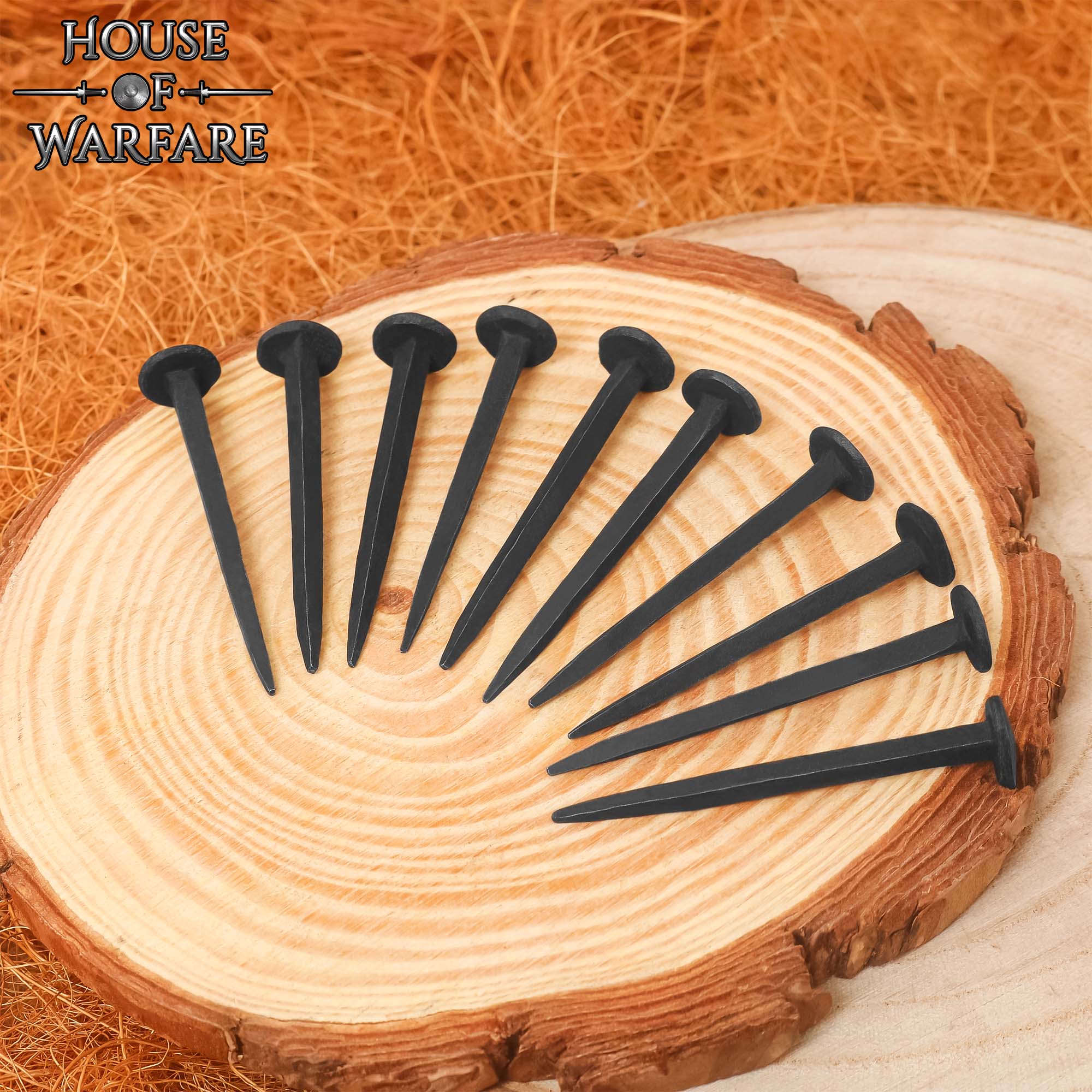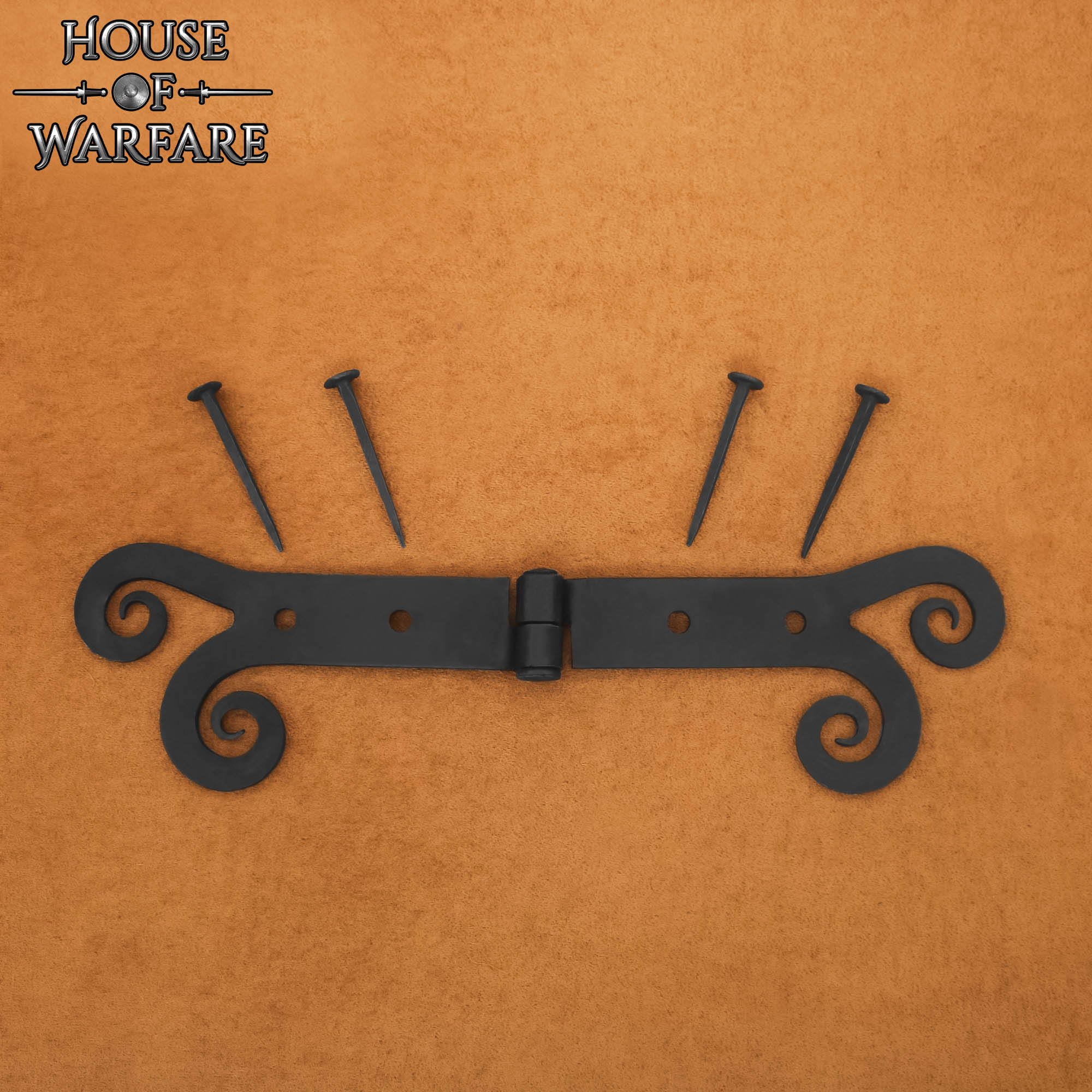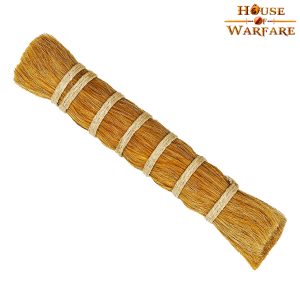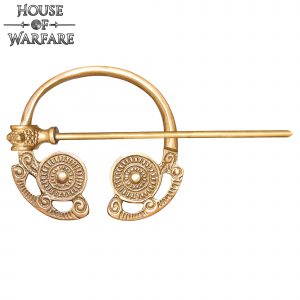Use of Nails in Shield Construction
Nails played a crucial role in binding the various layers of materials used in shields. Some specific uses of nails in shield construction include:
1. Securing the Leather or Rawhide Covering
To add durability, many shields were wrapped in a covering of leather or rawhide, which was fastened to the wooden core using nails or tacks. The nails would be driven around the perimeter of the shield, keeping the covering securely in place. Rawhide, in particular, would shrink as it dried, tightening and reinforcing the shield.
In some cases, nails were used to fasten overlapping strips of leather or hide, creating a layered structure that would offer additional protection against blows.
2. Attaching the Metal Rim
Many shields had a metal rim to protect the edges, which were vulnerable to damage from strikes. Nails or rivets were used to attach this metal rim to the wooden shield. These fasteners would be spaced evenly around the shield’s circumference, ensuring that the rim was securely attached and would not come loose during battle.
The metal rim helped prevent the wooden core from splintering when struck, extending the shield’s lifespan and making it more effective in combat.
3. Fitting the Shield Boss
The boss, a raised metal dome in the center of the shield, was critical for hand protection. It deflected blows and absorbed the impact of attacks, particularly from thrusting weapons like spears. To secure the boss, it was riveted or nailed through the wooden core. The nails or rivets were typically driven from the front of the boss into the shield, with their heads often visible as part of the shield’s design.
Sometimes, these nails were decorative as well as functional, contributing to the overall appearance of the shield.
4. Reinforcing the Handle and Straps
On the back of the shield, nails were also used to secure the handle or grip. In some cases, shields had leather straps for the arm to hold it in place, and these straps would be fastened to the shield’s wooden core with nails or rivets. The handle and straps needed to be strong enough to endure the force of blows, making secure fastening vital for shield effectiveness in battle.
Types of Nails Used
The nails or rivets used in shield construction were typically made of iron, and they were hand-forged by blacksmiths. These nails were relatively short but robust, designed to pierce through the wood and the leather or metal reinforcements. The heads of the nails were often flattened or rounded to prevent sharp edges from catching on the user’s clothing or armor.
Preservation of Shields
Few medieval shields have survived intact, as wood and organic materials tend to decay over time. However, archaeological finds and depictions in medieval art give us a good idea of how shields were constructed and how nails were used in the process. The discovery of iron nails and metal bosses in burial sites, such as Viking ship burials, has helped researchers reconstruct the techniques used in medieval shield construction.
Conclusion
Nails were a fundamental component in the construction of medieval shields, serving to fasten and reinforce the different layers of materials that made up the shield. They were used to secure leather coverings, attach metal reinforcements, fasten the shield boss, and hold handles and straps in place. Without these nails or rivets, shields would have been far less durable and effective in the heat of battle. Through their craftsmanship, medieval armorers and blacksmiths created shields that were not only functional but, in many cases, aesthetically designed to showcase a warrior’s status and skill.


